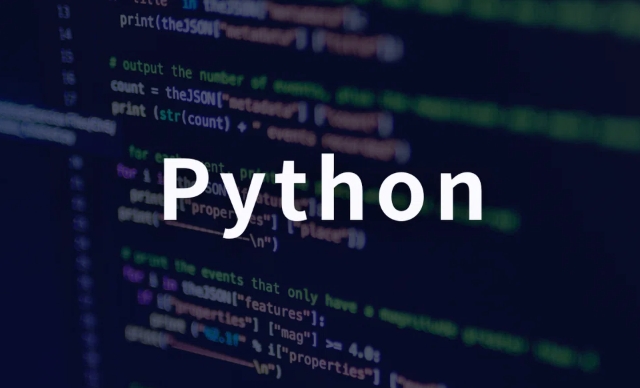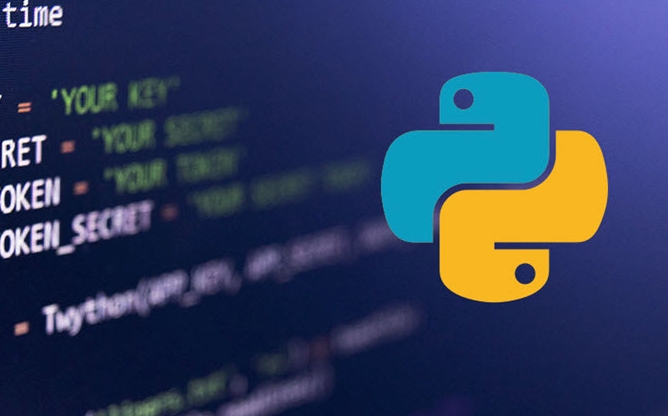In Python, subclasses can override their behavior by defining methods with the same name as the parent class. At this time, calling this method will be implemented with subclasses first; if the parent class logic is required, super() can be used to call the parent class method; when overwriting, the method signature should be kept consistent, pay attention to self parameters, be careful of multi-layer inheritance chains, and avoid overwriting key methods at will. 1. Subclasses can override the parent class method by defining the same name method; 2. Use super(). Method name() to call the original logic of the parent class; 3. When overwriting, keep the parameters and return values ??consistent to avoid interface errors; 4. The method definition must include self parameters; 5. Multi-layer inheritance must ensure that super is correctly linked; 6. It is not advisable to overwrite the key internal methods of the parent class to avoid causing problems.

Subclass overriding parent class methods is a very common operation in object-oriented programming, and Python is no exception. Simply put, it is to let the subclass redefine the methods inherited from the parent class, thereby achieving different functions. This mechanism is very practical, especially when you want to customize specific behaviors for different subclasses.

How to override parent class method in Python
The principle of overwriting methods is simple: as long as you define a method with the same name as the parent class in a subclass, Python will preferentially use the subclass method rather than the parent class.
For example:

class Animal:
def speak(self):
print("Animal speaks")
class Dog(Animal):
def speak(self):
print("Dog barks") At this time, if you create a Dog instance and call speak() method, the output is "Dog barks" instead of "Animal speaks" in the parent class.
This writing method does not require any extra keywords, just make sure the method names are consistent.

How to call parent class method when overwriting a method
Sometimes you don't want to completely abandon the behavior of the parent class, but want to add something to it. At this time, you can use the super() function to call the parent class method.
for example:
class Animal:
def speak(self):
print("Animal speaks")
class Dog(Animal):
def speak(self):
super().speak()
print("Dog barks")The result of the operation will be:
Animal speaks Dog barks
This approach is suitable for situations where you want to keep the parent logic while extending new features. Pay attention to the usage of super() . In Python 3, you can write super().方法名() directly without passing parameters.
Things to note when covering the method
Try to keep the method signature consistent
When subclasses override methods, it is best to keep the parameter list and return value type consistent with the parent class. Otherwise, other code that depends on the parent class interface may cause errors.Don't forget the self parameter
When defining a method, the first parameter must beself, which is a Python regulation. If it is missed, the program will report an error.Be careful when inheriting multiple layers
If there is a multi-layer inheritance relationship (such as A ← B ← C), you should pay attention to whethersuper()of each layer calls the chain structure correctly when overwriting the method, otherwise some initialization or logic may be skipped.Not all methods are suitable for coverage
Some parent-class methods may be a critical part of internal logic, and forced coverage may lead to system instability. Therefore, it is best to read the document or source code description before modifying it.
Basically that's it. Overriding the parent class method is a very basic but particularly commonly used technique. Understanding how to use super() and when to rewrite it can make your code more flexible and organized.
The above is the detailed content of Python child class override parent method. For more information, please follow other related articles on the PHP Chinese website!

Hot AI Tools

Undress AI Tool
Undress images for free

Undresser.AI Undress
AI-powered app for creating realistic nude photos

AI Clothes Remover
Online AI tool for removing clothes from photos.

Clothoff.io
AI clothes remover

Video Face Swap
Swap faces in any video effortlessly with our completely free AI face swap tool!

Hot Article

Hot Tools

Notepad++7.3.1
Easy-to-use and free code editor

SublimeText3 Chinese version
Chinese version, very easy to use

Zend Studio 13.0.1
Powerful PHP integrated development environment

Dreamweaver CS6
Visual web development tools

SublimeText3 Mac version
God-level code editing software (SublimeText3)

Hot Topics
 Polymorphism in python classes
Jul 05, 2025 am 02:58 AM
Polymorphism in python classes
Jul 05, 2025 am 02:58 AM
Polymorphism is a core concept in Python object-oriented programming, referring to "one interface, multiple implementations", allowing for unified processing of different types of objects. 1. Polymorphism is implemented through method rewriting. Subclasses can redefine parent class methods. For example, the spoke() method of Animal class has different implementations in Dog and Cat subclasses. 2. The practical uses of polymorphism include simplifying the code structure and enhancing scalability, such as calling the draw() method uniformly in the graphical drawing program, or handling the common behavior of different characters in game development. 3. Python implementation polymorphism needs to satisfy: the parent class defines a method, and the child class overrides the method, but does not require inheritance of the same parent class. As long as the object implements the same method, this is called the "duck type". 4. Things to note include the maintenance
 Python Function Arguments and Parameters
Jul 04, 2025 am 03:26 AM
Python Function Arguments and Parameters
Jul 04, 2025 am 03:26 AM
Parameters are placeholders when defining a function, while arguments are specific values ??passed in when calling. 1. Position parameters need to be passed in order, and incorrect order will lead to errors in the result; 2. Keyword parameters are specified by parameter names, which can change the order and improve readability; 3. Default parameter values ??are assigned when defined to avoid duplicate code, but variable objects should be avoided as default values; 4. args and *kwargs can handle uncertain number of parameters and are suitable for general interfaces or decorators, but should be used with caution to maintain readability.
 Explain Python generators and iterators.
Jul 05, 2025 am 02:55 AM
Explain Python generators and iterators.
Jul 05, 2025 am 02:55 AM
Iterators are objects that implement __iter__() and __next__() methods. The generator is a simplified version of iterators, which automatically implement these methods through the yield keyword. 1. The iterator returns an element every time he calls next() and throws a StopIteration exception when there are no more elements. 2. The generator uses function definition to generate data on demand, saving memory and supporting infinite sequences. 3. Use iterators when processing existing sets, use a generator when dynamically generating big data or lazy evaluation, such as loading line by line when reading large files. Note: Iterable objects such as lists are not iterators. They need to be recreated after the iterator reaches its end, and the generator can only traverse it once.
 Python `@classmethod` decorator explained
Jul 04, 2025 am 03:26 AM
Python `@classmethod` decorator explained
Jul 04, 2025 am 03:26 AM
A class method is a method defined in Python through the @classmethod decorator. Its first parameter is the class itself (cls), which is used to access or modify the class state. It can be called through a class or instance, which affects the entire class rather than a specific instance; for example, in the Person class, the show_count() method counts the number of objects created; when defining a class method, you need to use the @classmethod decorator and name the first parameter cls, such as the change_var(new_value) method to modify class variables; the class method is different from the instance method (self parameter) and static method (no automatic parameters), and is suitable for factory methods, alternative constructors, and management of class variables. Common uses include:
 How to handle API authentication in Python
Jul 13, 2025 am 02:22 AM
How to handle API authentication in Python
Jul 13, 2025 am 02:22 AM
The key to dealing with API authentication is to understand and use the authentication method correctly. 1. APIKey is the simplest authentication method, usually placed in the request header or URL parameters; 2. BasicAuth uses username and password for Base64 encoding transmission, which is suitable for internal systems; 3. OAuth2 needs to obtain the token first through client_id and client_secret, and then bring the BearerToken in the request header; 4. In order to deal with the token expiration, the token management class can be encapsulated and automatically refreshed the token; in short, selecting the appropriate method according to the document and safely storing the key information is the key.
 What are Python magic methods or dunder methods?
Jul 04, 2025 am 03:20 AM
What are Python magic methods or dunder methods?
Jul 04, 2025 am 03:20 AM
Python's magicmethods (or dunder methods) are special methods used to define the behavior of objects, which start and end with a double underscore. 1. They enable objects to respond to built-in operations, such as addition, comparison, string representation, etc.; 2. Common use cases include object initialization and representation (__init__, __repr__, __str__), arithmetic operations (__add__, __sub__, __mul__) and comparison operations (__eq__, ___lt__); 3. When using it, make sure that their behavior meets expectations. For example, __repr__ should return expressions of refactorable objects, and arithmetic methods should return new instances; 4. Overuse or confusing things should be avoided.
 How does Python memory management work?
Jul 04, 2025 am 03:26 AM
How does Python memory management work?
Jul 04, 2025 am 03:26 AM
Pythonmanagesmemoryautomaticallyusingreferencecountingandagarbagecollector.Referencecountingtrackshowmanyvariablesrefertoanobject,andwhenthecountreacheszero,thememoryisfreed.However,itcannothandlecircularreferences,wheretwoobjectsrefertoeachotherbuta
 Python `@property` decorator
Jul 04, 2025 am 03:28 AM
Python `@property` decorator
Jul 04, 2025 am 03:28 AM
@property is a decorator in Python used to masquerade methods as properties, allowing logical judgments or dynamic calculation of values ??when accessing properties. 1. It defines the getter method through the @property decorator, so that the outside calls the method like accessing attributes; 2. It can control the assignment behavior with .setter, such as the validity of the check value, if the .setter is not defined, it is read-only attribute; 3. It is suitable for scenes such as property assignment verification, dynamic generation of attribute values, and hiding internal implementation details; 4. When using it, please note that the attribute name is different from the private variable name to avoid dead loops, and is suitable for lightweight operations; 5. In the example, the Circle class restricts radius non-negative, and the Person class dynamically generates full_name attribute






